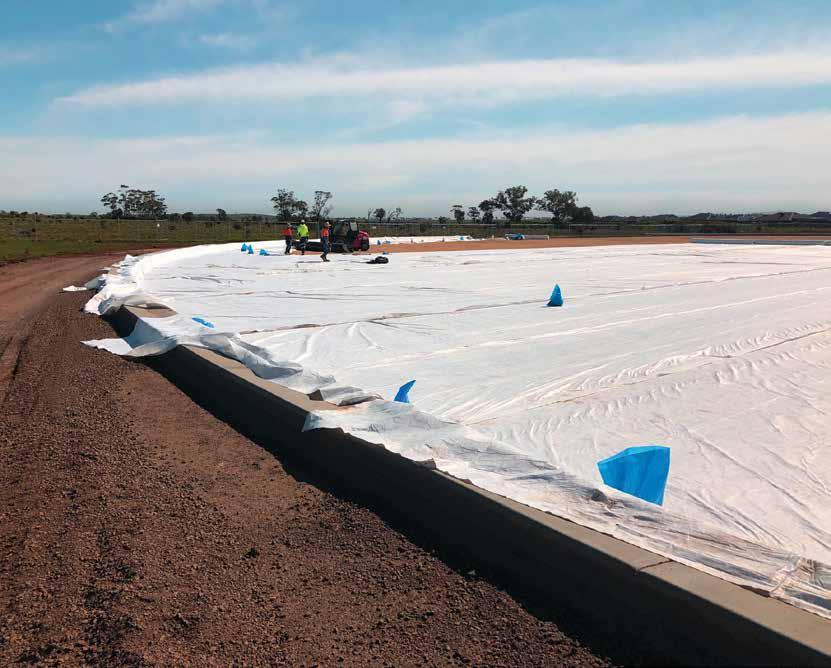






Thanks to our price guarantee, we can confidently say our prices are the best in the business.
Find a better price? We'll beat it by 5%.
How do we bring you that value? We’ve scoured the world to find manufacturing partners that deliver quality products at the best price.
By 'selling what we stock and stocking what we sell' it enables us to keep a much greater depth of stock than our competitors, this means 99.8% of orders are delivered in full… the first time!
We have a fleet of trucks, utes and semi-trailers to deliver to your site fast.
For extended product life, it’s quality that matters most. That’s why we make sure our products meet the highest standards – above state and territory requirements. Each of our products is NATA and IANZ laboratory tested.
GEOmasta™ products use the latest technology in geotechnical engineering. And we never stop innovating. Our worldwide team of design engineers, researchers and manufacturers are constantly working to perfect and expand our geosynthetic range.
CONTACT US
We're here to help
AU: 1300 885 364 NZ: 0800 865 292 sales@geomasta.com
VISIT US ONLINE
Learn more about Geomasta geomasta.com
BRADEN
LIGHT
Category Manager
Mobile: 0428 093 273
Email: braden.light@jaybro.com.au
PAUL DESSMANN
BDM - Landscaping
Mobile: 0436 638 795
Email: paul.dessmann@geomasta.com
We work in tandem with geotechnical design companies, and we bring that experience to your project.
When you come to us with your project, we take the time to understand the issues. Then we provide a suitable mix of products to match.
Fast delivery, every time.
With our roots in the Jaybro Group, excellent customer service is all we know. Last-minute orders are not a problem, with bulk stock available in all states for overnight delivery.
REGINA LENE
BDM - Civil
Mobile: 0456 794 707
Email: regina.lene@jaybro.com.au

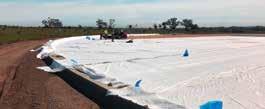


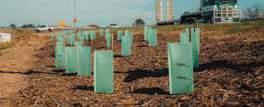


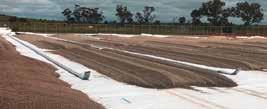


The Park Ridge residential subdivision is estimated to be a $5.7 million development and a masterstroke of community living blended with parks and established environmental and conservation areas. The project first commenced in 2018 and has since been released in a series of stages. Our customer, Shadforths Civil, was selected as the key civil construction contractor for new roads and parklands surrounding the subdivision.
The main challenge Shadforths Civil faced was how to achieve adequate drainage for the existing waterway corridor. This was located alongside the planned park area and needed to be managed to ensure minimal effect on the surrounding construction in the event of heavy rain or a flood event.
Shadforths Civil chose Jaybro and GEOmasta as a preferred supplier of coir mesh. This environmentally friendly product is a naturally fibrous and loose-knit material which promotes vegetation growth and a healthy environment for plant establishment. It also controls erosion with its strong, high tensile fibres, ensuring good erosion control over the medium term until the product eventually breaks down naturally into the soil.
The EROmasta coir mesh from Jaybro is being used to provide adequate filtration around the parklands and waterway areas of the estate.
Also used on this project were Jaybro’s rock-filled gabion mattresses. These simple yet strong wire mesh baskets are being used to create a secure sloped rock wall which will function as the embankment for the new waterway corridor.
With their highly porous free-draining construction, the gabions are ideal to provide bank stabilisation and yet still allow water to be filtrated. As they are constructed from flexible woven mesh, these gabions will settle into the landscape with expected natural soil movement, but will not compromise the overall parkland structure.
mastaWALL Mattresses are low profile baskets constructed of double-twisted hexagonal woven galvanized steel wire. The mattress construction contains internal diaphragms that create compartments or cells for stone fill, which are designed to ensure even distribution of the rock fill even after natural settling and structural movement.
The mattress range is available in 6m x 2m sizes in different thicknesses to suit different fills.
} Product: Wire Rock Mattress
} Customer: Shadforth’s Civil
} Project: Park Ridge Road
Residential Subdivision
} Location: Park Ridge, QLD




Contractors Glascott Landscape and Civil are putting the final touches on a new water park and recreation area at Oran Park in Sydney’s west. The Ron’s Creek Open Space and Splash Park Project is situated on a 2.5 hectare site in the Camden LGA.
Glascott Landscape and Civil’s involvement includes lighting, electrical and irrigation services, a bio-retention basin, a spillway bridge, plus significant planting and landscaping works. Beneath the surface, a complex network of services, pumps and filters drive the 30 water features that form this aquatic play space.
As there was a significant amount of tree planting involved in this project, the contractor needed a fast and reliable supplier of hardwood stakes and tree ties. A large number of trees would require support at this open, exposed and potentially windy site.
Using twin hardwood stakes and hessian tree tie straps to brace the newly planted trees ensured they would not be damaged whilst they were growing.
Jaybro’s GEOmasta division assisted Glascott Landscape and Civil with hardwood tree stakes and hessian tree ties. GEOmasta hessian webbing is 50mm wide and designed to support newly planted trees during the initial establishment period when used in conjunction with hardwood stakes.
When used together, hardwood stakes and hessian tree ties reduce excessive movement caused by wind, allowing young trees time to establish their root systems.
GEOmasta carries a wide range of tree planting products including stakes in various sizes, canes, corflute and plastic tree guards, water-wells and HDPE root barrier.
To find out more or get a quote on your tree planting needs, contact our GEOmasta landscaping team at Jaybro.
} Product: Hardwood Stakes & Tree Ties
} Customer: Glascott Landscape & Civil
} Project: Ron’s Creek Open Space & Splash Park Project
} Location: Oran Park, NSW
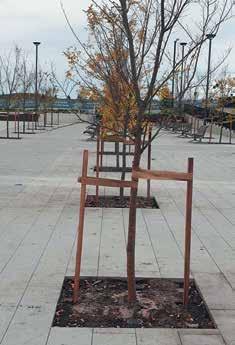





mastaTEX™ Nonwoven is a continuous filament geotextile made from highly durable virgin polyester fibres, which are resistant to all naturally occurring soil acids and alkalis. The textile is formed through needle punching in order to produce a product suitable for use in road & rail work, separation, drainage, protection and filtration works.
mastaTEX™ FiltaFab is a high quality staple fibre geotextile, designed for landscaping and small civil works. Due to the 3 dimensional structure, it provides an effective drainage material both through the pores, or within the fabric itself. mastaTEX™ FiltaFab is most commonly used as a filtration layer in trenches, as a pipe and aggregate wrap or behind retaining walls.
mastaTEX™ HS Woven is an engineered woven geotextile that has extremely high tensile strength characteristics at low levels of strain. HS Woven geotextiles can be manufactured with strengths up to 1600 kN/m in one direction.




mastaTEX™ Orange is a high quality staple fibre geotextile, designed for separating contaminated and non-contaminated soils. Due to its bright Orange colouring, mastaTEX™ Orange is most commonly used as a warning layer in areas liable to future excavations.
mastaTEX™ CoteroTEX geotextiles are a specialist heavy weight geotextile designed specifically for use in landfills as a liner cushion and in coastal applications for erosion control and rock armour protection.
strabaTEX™ Road Tape is a non-woven polyester geotextile which is laminated onto a bitumen compound polymer. It is resistant to high temperatures allowing hot asphalt to be laid directly onto the product. strabaTEX™ Road Tape has exceptional adhesion to bitumen and concrete.
NSW
Roads & Maritime Services (RMS) QA Specification R63 Geotextiles
(Separation and Filtration) May 2013 Edition 4 / Revision 0
RMS R63 is the NSW Main Roads specification documentation to which all Geotextile products are to be tested and approved before use on road and bridgeworks.
Clause 2
Material Requirements specifies the minimum requirements for the raw material quality, manufacturing processes, product testing & certification.
Clause 3
Storage, Packaging, Identification and Delivery specifies the method in which the product must be packaged, stored, marked and delivered.
Clause 4
Construction Requirements covers general site preparation, installation and site requirements.
Geomasta™ recommend the client read and understand Clause 4 and all subsequent annexures prior to installation.
VICROADS 210 – GEOTEXTILES IN EARTHWORKS December 2014
This section covers the requirements for the supply, handling and placing of geotextiles as listed below or used as a separation layer, or as a separation and filtration layer, in earthworks at locations shown on the drawings or specified.
210.03 Properties of Geotextiles.
General; specifies material properties and manufacturing process.
Robustness;
Outlines how the geotextiles are to be classified according to the G Rating
Equivalent Opening Size; Specifies pore size for use as a filtration material
UV Radiation Stabilisation;
The geotextile shall be stabilised against deterioration due to ultra-violet radiation such that when tested in accordance with AS3706.11 Standard
Testing;
All testing shall be performed by laboratories with third party accreditation to ISO/IEC 17025 by a signatory to the International Laboratories Accreditation Cooperation (ILAC) scheme, e.g. by NATA (National Association of Testing Authorities, Australia)
Geomasta™ recommend the client read and understand VR210.04 and all subsequent annexures prior to installation


Transport and Main Roads (TMR) MRTS27
Geotextiles Separation and Filtration June 2009
Clause 6
Material Requirements specifies the minimum requirements for the raw material quality, manufacturing processes, product testing & certification.
Clause 7
Storage, Packaging and Identification specifies the method in which the product must be packaged, stored and marked.
Clause 8
Delivery and Product Compliance covers requirements for ordering and delivery of geotextiles.
Clause 9
Construction Requirements covers general site preparation, installation and site requirements.
Clause 10
Acceptance criteria details the requirements by the contractor for onsite testing and sampling.
Geomasta™ recommend the client read and understand MRTS27 prior to installation.
Transit New Zealand TNZ F/7: 2003 Specification for Geotextiles
Clause 5
Material Requirements specifies the minimum requirements for the raw material quality, manufacturing processes, product testing & certification.
Clause 6
Storage, Packaging and Identification specifies the method in which the product must be packaged, stored and marked.
Clause 7
Delivery and Product Compliance covers requirements for ordering and delivery of geotextiles.
Clause 8
Construction Requirements covers general site preparation, installation and site requirements.
Clause 9
Acceptance criteria details the requirements by the contractor for onsite testing and sampling.
Geomasta™ recommend the client read and understand TNZ F/7: 2003 prior to installation.
ILAC is the international organisation for accreditation bodies operating in accordance with ISO/IEC 17011 and involved in the accreditation of conformity assessment bodies including calibration laboratories (using ISO/IEC 17025), testing laboratories (using ISO/IEC 17025), medical testing laboratories (using ISO 15189) and inspection bodies (using ISO/IEC 17020).
Accreditation is the independent evaluation of conformity assessment bodies against recognised standards to carry out specific activities to ensure their impartiality and competence. Through the application of national and international standards, government, procurers and consumers can have confidence in the calibration and test results, inspection reports and certifications provided.
Accreditation bodies are established in many economies with the primary purpose of ensuring that conformity assessment bodies are subject to oversight by an authoritative body. Accreditation bodies, that have been peer evaluated as competent, sign regional and international arrangements to demonstrate their competence. These accreditation bodies then assess and accredit conformity assessment bodies to the relevant standards.
International Accreditation New Zealand (IANZ) is the accreditation body of the Testing Laboratory Registration Council in New Zealand. It is an autonomous Crown entity established by the Testing Laboratory Registration Council Act, 1972. Accreditation by International Accreditation New Zealand (IANZ) is the international process for assessing and recognising the technical competence and the effective quality processes of a professional service and its staff. Laboratories, radiology services and inspection bodies displaying the IANZ Accreditation mark follow the best international technical and management systems standards, including full compliance with relevant international standards.
National Association of Testing Authorities is the authority responsible for the accreditation of laboratories, inspection bodies, calibration services, producers of certified reference materials and proficiency testing scheme providers throughout Australia. It is also Australia’s compliance monitoring authority for the OECD Principles of GLP. All State Standards specify geotextile testing must be completed by a NATA accredited laboratory.

3706.1
Methods of test General requirements, sampling, conditioning, basic physical properties and statistical analysis
This Standard sets out general requirements for the testing of fabrics intended for use as geotextiles. It sets out sampling and conditioning procedures, the methods for the determination of basic physical properties such as length and mass per unit area, and the principles of statistical analysis to be applied to the other Standards in this series, as appropriate.
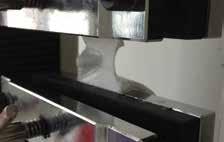
3706.3
Methods of test Determination of tearing strength - Trapezoidal method
This Standard sets out a method for determining the tearing strength of geotextiles under in-plane loading, using the trapezoidal method.
NOTE: The trapezoidal method is a tearing force tension test in which the strength is determined primarily by the individual fibres of the fabric structure, and their bonding or interlocking where applicable.

3706.2A
Methods of test Determination of tensile properties - Wide strip and grab method
This Standard sets out the method for determining the tensile properties of geotextiles in both atmospheric and wet conditions.

AS 3706.4 - CBR Burst Strength
Methods of test Determination of burst strength - California bearing ratio (CBR) - Plunger method
This Standard sets out the method for determining the burst strength and deformation properties of geotextiles using the California bearing ratio (CBR) test apparatus for both atmospheric-conditioned and wet-conditioned specimens.

AS 3706.7 - Pore Size
Methods of test Determination of pore-size distribution - Dry-sieving method
This Standard sets out the method for determining the pore-size distribution and apparent opening size (AOS) of a geotextile using the dry sieving method, and, in consequence, the equivalent opening size (EOS).
This method is applicable to geotextiles having an EOS not less than 53 um.
NOTES:

AS 3706.2B - Grab Tensile
Methods of test Determination of tensile properties - Wide strip and grab method
This Standard sets out the method for determining the tensile properties of geotextiles in both atmospheric and wet conditions.

AS 3706.5 - Puncture Resistance
Methods of test Determination of puncture resistance - Drop cone method
This Standard sets out the method for determining the puncture resistance of geotextiles by the drop cone method for both atmospheric and wet-conditioned specimens. This method is applicable to both woven and non-woven geotextiles.
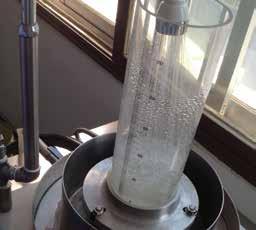
1. Thicker fabrics or those with finer openings may need to be tested by other pore-size distribution tests.
2. For fabrics with larger pore sizes, optical methods may be preferable (e.g. over 2 mm, or over 0.6 mm if suitable sand is hard to obtain).
of permittivity, permeability and flow rate
This Standard sets out the method for determining the permittivity of geotextiles by measuring the flow of water through the fabric normal to its surface under a constant head.

mastaTEX™ Nonwoven is a continuous filament geotextile made from highly durable virgin polyester fibres, which are resistant to all naturally occurring soil acids and alkalis. The textile is formed through needle punching in order to produce a product suitable for use in road & rail work, separation, drainage, protection and filtration works.
mastaTEX™ NonWoven geotextiles are manufactured to ISO 9001 quality assurance procedures. Properties of mastaTEX™ NonWoven geotextiles are derived from in house and independent laboratory testing.
} Pavement Stabilisation
} Subgrade/Subsoil Separation
} Slope Stabilisation
} Liner protection
All Independent testing is carried out by NATA accredited laboratories. The above properties are derived from data compiled over
from any one particular test batch.


mastaTEX™ FiltaFab is a high quality staple fibre geotextile, designed for landscaping and small civil works. Due to the 3 dimensional structure, it provides an effective drainage material both through the pores, or within the fabric itself. mastaTEX™ FiltaFab is most commonly used as a filtration layer in trenches, as a pipe and aggregate wrap or behind retaining walls. mastaTEX™ FiltaFab is not approved to be used on road or railways due to the mechanical properties of a short fibre material.
SPECIFICATIONS
PROPERTIES
} Behind Retaining Walls
} Drainage
} Filtration
} Soil Stockpile
} Temporary Erosion Control
} Subsoil Filter APPLICATIONS

mastaTEX™ HS Woven is an engineered woven geotextile that has extremely high tensile strength characteristics at low levels of strain. HS Woven geotextiles can be manufactured with strengths up to 1600 kN/m in one direction.
y Reinforcement Strength. Higher ultimate tensile strength properties per ASTM D4595 than any comparable reinforcement product.
y Creep Resistance. Polyester fibers provide excellent creep resistance which results in higher long term design strengths per GRI-GT7 requirements.
The difference mastaTEX™ HS Wovens make are: } Embankment
y Soil Interaction. Exceptional soil confinement resulting in superior load distribution.
y Cost. HS Woven geotextiles provide cost effective strengths for reinforced soil structures.
Stabilisation
y Store HS Woven rolls under cover and suspended off the ground.
y When installing HS Woven rolls on slopes or embankments use the assistance of the Geomasta 2-part spreader bar (Please contact us for further details).
y The HS Woven should not be left exposed or uncovered for more than 14 days.
y Damaged HS Woven, before or during installation should be replaced to ensure the strength of the geotextile isn’t affected.
y Proper replacement shall consist of replacing the affected area and adding at least one metre additional geogrids to all sides of the affected area. (Refer to Figure 4.1 - HS Woven Replacement)
y Before construction vehicles/ equipment should drive on the HS Woven it should be covered by a minimum of 300mm uncompact fill. For site specific requirements please seek the advice of a geotechnical engineer.
Reinforcement
Pavements
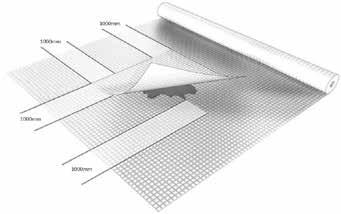
Figure 4.1 - HS Woven Replacement (MRTS58)
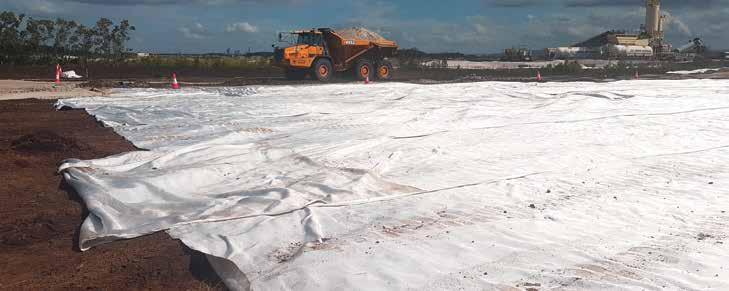


mastaTEX™ Orange is a high quality staple fibre geotextile, designed for separating contaminated and non-contaminated soils. Due to its bright Orange colouring, mastaTEX™ Orange is most commonly used as a warning layer in areas which are liable to future excavations.
mastaTEX™ Orange provides the same performance as other geotextiles in the mastaTEX™ range
*Specifications as per manufacturer

APPLICATIONS
} Segregation of contaminated soil
} Filtration
} Warning Layer

mastaTEX™ Coterotex geotextiles are a specialist heavy weight geotextile designed specifically for use in landfills as a liner cushion and in coastal applications for erosion control and rock armour protection.
y Liner Protection – CoteroTEX geotextiles are suited for use in landfills as a protection layer for polymeric liners, preventing liner damage and reducing the risk of soil contamination.
y Separation – Available in a range of weights, CoteroTEX is ideal as a separation layer preventing different materials from mixing, and maintaining the performance of the individual layers. Due to the robustness of this geotextile, it is suitable for use in separating a lot larger rock fill than traditional geotextiles.
y Coastal Protection – Due to the resistance to harsh environments, CoteroTEX is the geotextile of choice when retaining sand or soil which is subject to constant water movement. Used both as a surface layer and under rock revetments, CoteroTEX is UV stabilised and will retain its strength and robustness properties in tough environmental conditions.
} Liner Protection
} Separation
} Coastal Protection APPLICATIONS
*Specifications as per manufacturer

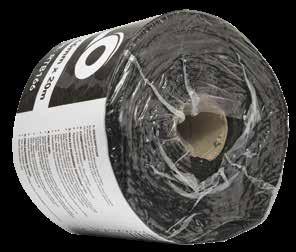
strabaTEX™ Road Tape is a non-woven polyester geotextile which is laminated onto a bitumen compound polymer. It is resistant to high temperatures allowing hot asphalt to be laid directly onto the product. strabaTEX™ Road Tape has exceptional adhesion to bitumen and concrete.
Its flexibility and self adhesive composite membrane, along with high tensile strength, puncture and heat resistance define it as the best solution in treating roads and bridges. It is used to treat cracking in road pavements and can also be used to seal concrete culvert joints.
*Specifications as per manufacturer
} Pavement Joint Sealing
} Basement Waterproofing
} Concrete Crack Treatment
mastaTEX® geotextile rolls are packaged in heavy duty plastic wrapping that is PTFE UV resistant. Each roll is labelled with an identification code, width, length and batch number.
Our Recommendations
y Store mastaTEX rolls out of direct sunlight, and suspended off the ground.
y When installing mastaTEX™ geotextile rolls over 150kg’s on slopes or embankments, it is recommended you use the assistance of the GEOmasta 2-part spreader bar (Please contact us for further details).
y Geotextile rolls are not to be left exposed or uncovered for more than 14 days. Covering within 48 hours is recommended.
y Before construction vehicles/ equipment should drive on the geotextile, it should be covered by a minimum of 200mm uncompact fill. For site specific requirements please seek the advice of a geotechnical engineer.
y Damaged geotextiles, before or during installation should be replaced to ensure the strength of the geotextile isn’t affected.
y Proper replacement shall consist of replacing the affected area and adding at least one metre additional geotextile to all sides of the affected area.
2. Placement
y Placement of geotextiles should be in accordance with project specific guidelines.
y Prior to geotextile placement, the ground must be cleared of any obstructions such as trees, shrubs and rocks, to form a smooth level surface.
y Geotextiles should be laid in the direction of strain or according to project specifications, with consideration to removal of wrinkles or pre-tensioning of rolls.
y For placement of heavier rolls on slopes or embankments, a GEOmasta 2-part spreader bar is recommended.
To ensure the geotextile properties are not negatively impacted in any way, appropriate site storage and handling procedures should be followed.
y Overlapping of geotextiles is required to provide continuance in strength and separation performance through frictional resistance between layers.
y Overlap width is primarily dependant on the ground conditions, however there will be some variance between types of geosynthetics being installed. Ground conditions are typically measured in CBR (California Bearing Ratio) and this is used as a guideline to determine geotextile grades and overlap widths required.
Recommended Minimum Overlap as per Austroads, Guide to Geotextiles – Technical report January 1990
CBR MINIMUM OVERLAP
>2 300 - 450mm
1-2 600 - 900mm
All roll ends on subgrade as above Roll ends on slopes 900mm or sewn
Austroads, Guide to Geotextiles – Technical report January 1990.
4. Fill Placement
When placing fill over an installed geotextile or geogrid, it must be done in a way that the joints or overlaps are not damaged. A leading edge of geotextile or grid must not be exposed, with the geotextile being laid in roof shingle configuration.
Construction plant or equipment is not to drive directly on uncovered geotextiles. To avoid damage and a reduction in material performance, a minimum uncompacted fill of 200mm is recommended before allowing vehicles or plant to travel on installed geosynthetics.
Reference;
y Austroads, Guide to Geotextiles – Technical report January 1990. The reader should refer to this document for additional guidance.
y Transport & Main Roads MRTS27 – Technical Specification for Geotextiles
y Transit NZ F/7 – Geotextiles in Construction
y Roads & Maritime Services R63 - Geotextiles in Construction
y VicRoads 210
y Koerner - Designing with Geotextiles – Fifth Edition.
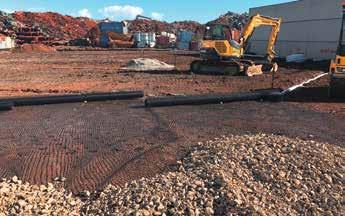



mastaGRID™ Poly is an engineered polypropylene geogrid designed for soil stabilisation, separation & reinforcement applications. This is done through the process of extruding, polypropylene sheets then both stretching in both longitudinal and transverse directions.
mastaGRID™ Composite is an engineered geogrid designed for soil stabilisation, separation and reinforcement applications. mastaGRID™ Composite is manufactured from Polypropylene through the process of extruding, longitudinal and transverse heat stretching. mastaTEX™ is then heat bonded to the grid to form a sound composite structure.
mastaGRID™ARC55™ Composite is an engineered geogrid designed for asphalt reinforcement applications, to reduce reflective pavement cracking over concrete slab joints, and limit cracking caused by thermal substrate movement.
mastaGRID™ RSG Uniaxial Geogrid is especially designed for soil reinforcement. It is manufactured with high quality High Density Polyethylene resins, from the process of extruding and longitudinal stretching. mastaGRID™ RSG Uniaxial Geogrid has high tensile strength, excellent interlock capacity and low creep deformation.
NSW
RMS R44 Earthworks & R67 HS Geotextile
ASTM D6637 - 11
QLD TMR MRTS58 Subgrade Reinforcement VIC VicRoads 210 Geotextiles in Earthworks
Standard Test Method for Determining Tensile Properties of Geogrids by the Single or Multi-Rib Tensile Method
Scope
1. This test method covers the determination of the tensile strength properties of geogrids by subjecting strips of varying width to tensile loading.
2. Three alternative procedures are provided to determine the tensile strength, as follows:
i) Method A—Testing a single geogrid rib in tension (N or lbf).
ii) Method B—Testing multiple geogrid ribs in tension (kN/m or lbf/ft).
iii) Method C—Testing multiple layers of multiple geogrid ribs in tension (kN/m or lbf/ft).
3. This test method is intended for quality control and conformance testing of geogrids.
4. The values stated in SI units are to be regarded as the standard. The inch-pound values stated in parentheses are provided for information only.
5. This standard may involve hazardous materials, operations, and equipment. This standard does not purport to address all of the safety concerns, if any, associated with its use. It is the responsibility of the user of this standard to establish appropriate safety and health practices and determine the applicability of regulatory limitations prior to use.
ASTM D4595 - 17
Standard Test Method for Tensile Properties of Geotextiles by the Wide-Width Strip Method
Scope
1. This test method covers the measurement of tensile properties of geotextiles using a wide-width strip specimen tensile method. This test method is applicable to most geotextiles that include woven fabrics, nonwoven fabrics, layered fabrics, knit fabrics, and felts that are used for geotextile application.
2. This test method covers the measurement of tensile strength and elongation of geotextiles and includes directions for the calculation of initial modulus, offset modulus, secant modulus, and breaking toughness.
ASTM D5818 - 11(2018)
Standard Practice for Exposure and Retrieval of Samples to Evaluate Installation Damage of Geosynthetics
Scope
1. This practice covers standardized procedures for obtaining samples of geosynthetics from a test section for use in assessment of the effects of damage immediately after installation caused only by the installation techniques. The assessment may include physical testing. This practice is applicable to any geosynthetic.
2. This practice is limited to full-scale test sections, and does not address laboratory modeling of field conditions. This practice does not address which test method(s) to use for quantifying installation damage.
ASTM D7737 - 11
Standard Test Method for Individual Geogrid Junction Strength
This test method is an index test which provides a procedure for determining the strength of an individual geogrid junction, also called a node. The test is configured such that a single rib is pulled from its junction with a cross-rib to obtain the maximum force, or strength of the junction. The procedure allows for the use of two different clamps with the appropriate clamp selected to minimize the influence of the clamping mechanism on the specific type of geogrid to be tested.
ASTM D4355 - 07
Standard Test Method for Deterioration of Geotextiles by Exposure to Light, Moisture and Heat in a Xenon Arc Type Apparatus
Scope
1. This test method covers the determination of the deterioration in tensile strength of geotextiles by exposure to xenon arc radiation, moisture, and heat.
ASTM D5321 / D5321M - 17
Standard Test Method for Determining the Shear Strength of Soil-Geosynthetic and Geosynthetic - Geosynthetic Interfaces by Direct Shear
Scope
1. This test method covers a procedure for determining the shear resistance of a geosynthetic against soil, or a geosynthetic against another geosynthetic, under a constant rate of deformation.
2. The test method is intended to indicate the performance of the selected specimen by attempting to model certain field conditions. Results obtained from this method may be limited in their applicability to the specific conditions considered in the testing.
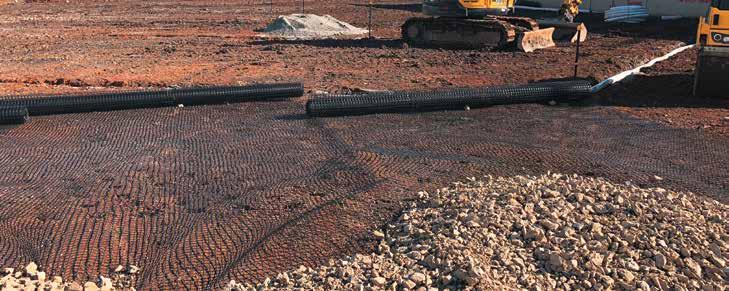

mastaGRID™ Poly is an engineered polypropylene geogrid designed for soil stabilisation, separation & reinforcement applications. This is done through the process of extruding, polypropylene sheets then both stretching in both longitudinal and transverse directions.
mastaGRID™ Poly rigid biaxial geogrids perform best in granular, angular fills and are used under roads, railways, loading platforms for sub-base soil reinforcement & stabilisation.

mastaGRID™ Composite is an engineered geogrid designed for soil stabilisation, separation and reinforcement applications. mastaGRID™ Composite is manufactured from Polypropylene through the process of extruding, longitudinal and transverse heat stretching. mastaTEX™ is then heat bonded to the grid to form a sound composite structure.
It is designed to prevent reflection cracking, water damage and improve load capacity in road construction and renovation. It has the property of high temperature resistance and anti-fatigue cracking and therefore extending the life and time of asphalt pavements.
SPECIFICATIONS
derived from independent 3rd party test

} Base Reinforcement
} Embankment Stabilisation
} Subgrade Reinforcement
} Subgrade Separation

mastaGRID™ RSG Uniaxial Geogrid is especially designed for soil reinforcement. It is manufactured with high quality High Density Polyethylene resins, from the process of extruding and longitudinal stretching. mastaGRID™ RSG Uniaxial Geogrid has high tensile strength, excellent interlock capacity and low creep deformation.

} Retaining Wall Reinforcement
} Embankments Stabilisation
} Slopes Reinforcement
} Landfill Side Slopes Reinforcement
SPECIFICATIONS
*Specifications as per manufacturer

mastaGRID™ARC55™ Composite is an engineered geogrid designed for asphalt reinforcement applications, to reduce reflective pavement cracking over concrete slab joints, and limit cracking caused by thermal substrate movement.
ARC55™ is manufactured using a high tensile polyester geogrid stitched to a heat pressed non-woven polyester geotextile and coated in bitumen to increase bonding with asphalt layers. The PET material has a lot higher heat resistance than PP products, meaning it is better suited to asphalt applications.
*Specifications derived from independent 3rd party test results
} Asphalt reinforcement
} Reduce reflective cracking
} Prevent traffic induced shearing
} Extend pavement life

mastaGRID™ PET Grid is an engineered woven geogrid with strengths up to 1200kN/m at strains of less than 10%. mastaGRID™ PET Grid is manufactured using high tenacity polyester fibres coated with a bitumous polymer to protect it against acids and alkalis naturally occurring in soils.
mastaGRID™ PET Grid is the preferred geogrid for a range of soil reinforcement applications including slopes and earth retainment.
Due to the physical properties of PET geogrids, it is not recommended that this product be used in road base, or other applications involving fill material greater than 40mm.
SPECIFICATIONS
Note:
(1) MD = Machine Direction; TD = Transverse Direction.
(2) Roll width can be 3.95m, 5m, 5.2m,5.95m or as per customized
(3) Maximum tensile strength can up to 1200kN/m
*Specifications as per manufacturer

} Asphalt reinforcement
} Embankments
} Pavements
} Stabilisation APPLICATIONS
mastaGRID® geogrid rolls that are more susceptible to UV effects are packaged in heavy duty plastic wrapping that is PTFE UV resistant. Each roll is labelled with an identification code, width, length and unique roll batch number.
To ensure the geogrid properties are not negatively impacted in any way, appropriate site storage and handling procedures should be followed.
y Where applicable, store geogrid under cover and suspended off the ground.
y When installing mastaGRID rolls on slopes or embankments use the assistance of the Geomasta 2-part spreader bar (Please contact us for further details).
y mastaGRID PET rolls should not be left exposed or uncovered for more than 14 days, however mastaGRID PP grids will not be affected if left exposed for up to 45 days
y Damaged mastaGRID rolls, before or during installation should be replaced to ensure the strength of the geotextile isn’t affected.
y Proper replacement shall consist of replacing the affected area and adding at least one metre additional geogrids to all sides of the affected area. (Refer to Figure 4.1 - HS Woven Replacement)
y Before construction vehicles/ equipment should drive on the HS Woven it should be covered by a minimum of 200mm uncompact fill. For site specific requirements please seek the advice of a geotechnical engineer.
2. Subgrade Preparation And Installation
Subgrade shall be prepared prior to placement, providing a level and uniform ground surface, with appropriate clearing and grubbing performed to accomplish this. Also refer to the project documents as additional preparation could be outlined in them and may be required.
Where applicable in a subgrade improvement application, mastaTEX geotextile are to be installed as a separation layer below the geogrid to segregate subgrade and fill layers.
mastaGRID shall be installed in accordance with the lines and grades shown on the plans and specifications. All wrinkles and folds must be removed. When required, the mastaGRID PET may be pretensioned to eliminate slack, this is particularly applicable to uniaxial products.
3. Overlapping
Sufficient overlap width is required between mastaGRID rolls to ensure a constant tensile strength is maintained across all joins. The amount of overlap depends primarily on the subgrade conditions and the potential for equipment to cause ruts.
Subgrade strength and the CBR value can be used as a guideline for the minimum overlap required – see table below.
Reference; SUMMARY OF OUR RECOMMENDATIONS
y RMS R63 - Geotextiles
y RMS R67 - High Strength Geosynthetic Reinforcement
Recommended Minimum Overlap Requirements As Per MRTS58 8.2
4. Mastagrid Replacement
y Damaged mastaGRID rolls, before or during installation should be replaced to ensure the strength of the geotextile isn’t affected.
y Proper replacement shall consist of replacing the affected area and adding at least one metre additional geogrids to all sides of the affected area.
(Refer to Figure 4.1 - Grid Replacement)

4.1 - Grid Replacement
5. Fill Placement
Care shall be taken to ensure that mastaGRID geogrids don’t separate at the overlaps during construction. Road base material shall be placed in lift thickness as shown on the plans. Before construction vehicles/equipment should drive on the geogrid it should be covered by a minimum of 200mm uncompact fill. For site specific requirements please seek the advice of a geotechnical engineer.

5.1 – Minimum fill thickness
y MRTS58 - Subgrade Reinforcement Using Pavement Geosynthetics
y MRTS100 - High Strength Geosynthetic Reinforcement In Road Embankments

EROmasta™ HDPE EroWeb is constructed of lightweight and flexible three dimensional, expandable perforated panels made from high-density polyethylene (HDPE) strips which are ultrasonically bonded together to form an extremely strong configuration. EROmasta™ HDPE EroWeb System can be filled with a wide range of material: aggregate, concrete, sand, soil, etc.
EROmasta™ HDPE EroWeb is engineered for soil stabilization applications, it’s used to help improve the performance of standard construction materials and erosion control treatments
SPECIFICATIONS
*Specifications as per manufacturer
APPLICATIONS
} Erosion Control } Load Support
Slope Protection
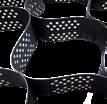
Channel protection
Retaining Wall
Ground Stabilisation

EROmasta™ SeedMat is a synthetic turf reinforcement mat, designed and engineered to protect soil from erosion and provide an environment that encourages rapid vegetative root development. It is a three dimensional tri-layered mat manufactured from polyethylene. It is constructed using a base of high tensile layers of net bonded to upper layers to form a cuspated surface designed to trap soil particles and seeds.
EROmasta™ SeedMat creates an immediate and long term defence against natural erosion due to wind, rain and flooding. Top soil and seed is applied on top of EROmasta™ SeedMat.
Synthetic erosion mats and blankets have become a practical choice for cost efficient, immediate and permanent solutions to help stabilisation and control erosion. EROmasta™ products offer ecologically sensitive substitutes to alternate solutions.
*Specifications as per manufacturer

APPLICATIONS
} Embankments
} Stormwater Channels
} Easements
} Landscaping
CellGrip is designed to secure and enhance geocell performance in slope reinforcement and soil retention applications.
y Eliminates time & labour associated with carrying, deploying and hammering traditional J-hooks
y Clips into the perforated side walls of the Geocell
y Superior performance when compared to traditional rebar J-hooks, up to 9x the pull out force versus J-hooks
y Quick and easy to install with a standard electric drill – 5x faster installation process
y Can be installed to full depth without damaging the Geocell
y Actively anchors Geocell’s against natural and sliding forces, reducing the need for heaving anchor and trenching.


DIMENSIONS UNIT
A mm 40 40
B mm 65 65
C mm 202 202 SPECIFICATIONS
INSTALLATION

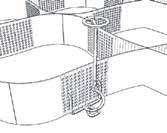




The TL-P1 holds all types of erosion control and soil stabilisation blanket matting securely in place. The high load anchoring pin is designed to hold all types of turf reinforcement matting, erosion blankets, geotextiles and landscaping fabrics.
y Up to ten times quicker to install
y Reduces labour costs associated with reworking loose pins
y Superior pull out performance compared to traditional pins and stakes
y Ensures close contact between the matting and soil
y Designed to eliminate damage to the mat
y Removes the need for a separate washer
y Easy installation with standard electric drill and bespoke chuck
SPECIFICATIONS
DIMENSIONS






















Gabions have traditionally been constructed using flexible woven mesh for retaining structures and scour protection systems due to their porous free draining construction combined with durable rock infill. The woven mesh has proven successful in hydraulic applications allowing for potential differential settlements of structures.
Applications include industrial, commercial and road projects. Other applications they can be used for include embankment reinforcement, bank stabilisation, erosion control, landscape and architectural design features, sound walls and noise attenuation structures, thermal rock banks and weirs.
SPECIFICATIONS
DIMENSIONS
APPLICATIONS
} Sound Walls
} Retaining Walls
} Embankment Reinforcement
} Coastal Protection
} Energy Dissipation
} Landscape Features

mastaWALL™ LinkWire baskets are used for a wide variety of retaining wall structures. Their versatile sizes allows the design of many different wall sections to suit the architectural demands of a project as well as its engineering requirements.
Gabions may be used for gravity retaining walls, reinforced soil retaining walls and low-height landscaping walls.
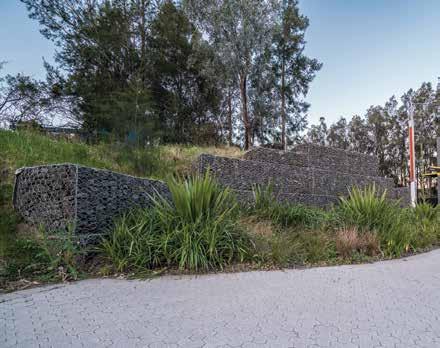

mastaWALL™ Mattresses are low profile baskets constructed of double twisted hexagonal woven galvanized steel wire with internal diaphragms that create compartments or cells.
The compartment or cells are of equal dimensions and spacing to provide even distribution of the stone fill throughout the mattress even after structural movement. Even distribution of the stone fill ensures that the mastaWALL™ mattress maintains intimate contact with the foundation soil.

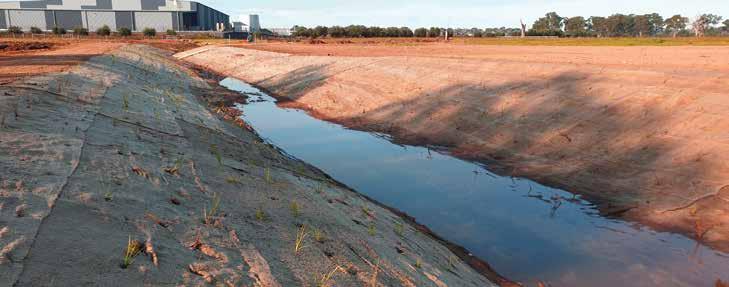
EROmasta™ Jute Mat is an organic product which assists in weed and erosion control. An eco-friendly way of protecting young trees and shrubs by retarding growth of competing weeds, and reducing the need to use damaging herbicide.
Due to the 3 dimensional structure, EROmasta™ Jute Mat allows both air and water to pass through. This creates a moist and breathable environment conducive to plant growth
SPECIFICATIONS
APPLICATIONS
Weed Control
Coastal areas
Slope Protection
Erosion Control
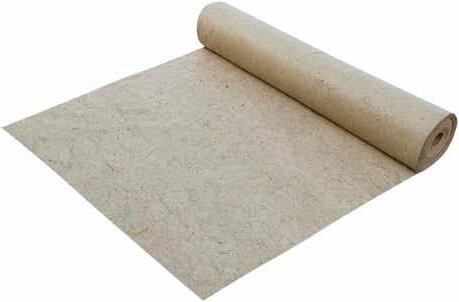

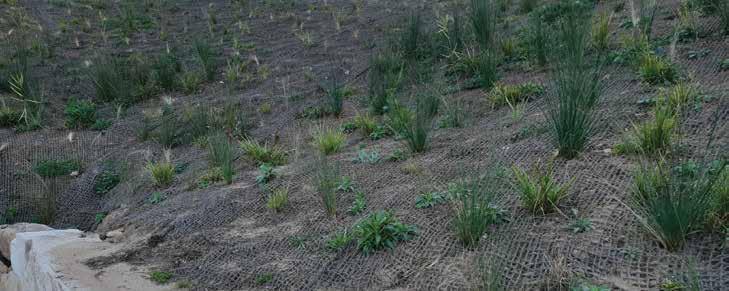
EROmasta™ CoirMesh is an open weave organic fibre mat made from 100% coconut fibre. Coir Mesh has a longer effective life than other biodegradable erosion control materials and can last up to 3 years. Coir products hold water efficiently, ensuring a moist environment to promote faster plant growth.
EROmasta™ CoirMesh has a higher tensile strength than the more common JuteMesh products, allowing it to be installed on steeper batters, or areas with a higher water flow.
Coir is a renewable resource, widely used in civil engineering and landscape applications. It is fully biodegradable, adding organic matter to the soil. APPLICATIONS } Grass Establishment
Natural Revegetation Areas
Coastal areas
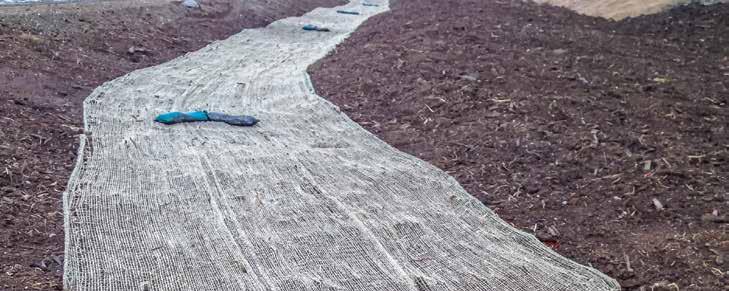
EROmasta™ Jute Mesh is a fully biodegradable organic product made from jute, which is a derivative of hessian. Specifically designed as an erosion control mat, Jute Mesh creates an environment which promotes rapid natural plant growth.
SPECIFICATIONS
INSTALLATION
Prepare The Site
1. Area preparation is crucial before installation. Remove all rocks, greenery and rubble to ensure you create a levelled soil subgrade for the Mesh to be placed on.
2. To grow plants or grass through the mesh at least 60mm of top soil is necessary to encourage their growth and survival.
Grass Establishment
Coastal areas

Natural Revegetation Areas
Wetlands
Install Jute Mesh
When installing EROmasta™ Jute Mesh you should follow the below recommendations;
1. Lay in direction of the flow of water
2. Overlap mesh to protect leading edges from the flow of water and wind by at least 100mm.
3. When installing on embankments, a trench at least 200mm is required at the top to lay mesh into, pin down and backfill. Pins should be 500-750mm apart.
4. As a general rule 2-3 pins required per m2.
5. Allow the mesh to follow the natural contour of the terrain, do not apply tension to the mesh when laying. This will prevent suitable connection with the soil subgrade and could affect vegetation growth.

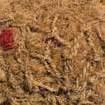
COIRmasta™ CoirLogs are an environmentally friendly alternative to hay bales and expensive rip-raps or cement stabilisation techniques, COIRmasta™ CoirLogs are ideal for constructing check structures, managing changes in stream flow velocity, shaping channels and stabilising shorelines.
CoirLogs are a natural planting medium for vegetation and made from 100% coir (coconut) fibre compacted into an outer mesh of bristle coir twine, COIRmasta™ CoirLogs are a totally biodegradable material that last up to three to five years and are biodegradable within 5-10 years. They are easily installed and will blend naturally into the environment over time.
} Water diversion
} Sediment Filtration
} Spill Containment
} Stream Bank Stabilisation
} Erosion Control
FEATURES & BENEFITS
} Last up to three to five years
} A large roll of 100% biodegradable coir made from organic coconut fibre
} Can be fixed in swale for sediment retention, and around wetlands
} Provides protection until natural vegetation is established
} Stack them on top of each other to form a barrier. This is used in areas with wave movement and tidal changes

EROmasta™ WeedMat is a flexible, tight woven poly mesh used for weed control. Whilest being inexpensive it is also, UV Stabilised so as to create a lasting barrier against weeds.
The structure of the EROmasta™ WeedMat is tight enough to prevent light reaching the soil so weeds cannot grow, but allows air and water to flow through in order to prevent soil souring.
y The tight weave prevents light reaching the soil
y Prevents weed growth
y Allows air and water to pass through the weave
y Exceeds Australian Standards
y Economical and lasts up to 12 months
y Grid line is used by nurseries for aligning pots
APPLICATIONS
} Landscaping and roadsides
} Nurseries
} Weed control in garden beds
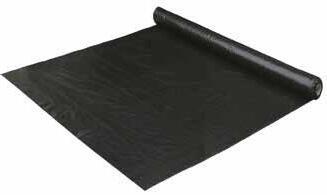
Hessian Rolls are biodegradable and can be used for a variety of purposes including protecting and screening plants, as part of a mulch system, and also in a variety of landscaping applications.
y A tightly woven hessian fabric which is suitable for protecting root balls during tree transplanting, and as a short-term site screen
y Can also be used to maintain moisture in soils and turf, and for seeding
y Folded for ease of application.
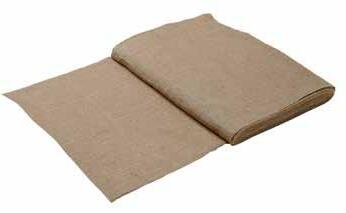
Hessian Rolls
GEOmasta™ Retaining Pins are used to fix geotextile fabric or erosion control matting to the soil ground. Chisel tipped ends allow the pin to pierce through for a quick and easy installation.
In most cases 150mm Pin is used for relatively firm compacted soils and the 300mm Pin is used for pinning through loose topsoil. It can also be used for irrigation tubing.
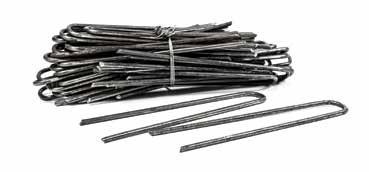

The GEOmasta® range of premium hardwood stakes is suited specifically to Landscaping Contractors.

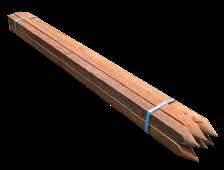
y
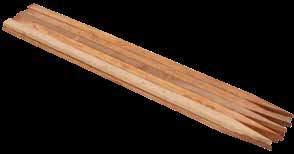

y Ideal for young tree planting where plastic sleeve tree guards are being used to protect plants. Machine rounded bamboo, forming a solid flower stick
y Used to support newly planted trees and plants
y Inexpensive and easy to use

y For use with stakes and tree ties to limit the movement and support newly planted trees and plants
y UV Stabilized
y Made from recyclable plastic
y Can be cut to any length to suit application
y Size: 12mm x 100m Roll

y For use with stakes and tree ties to limit the movement and support newly planted trees and plants
y UV Stabilized
y Made from polypropylene
y Can be cut to any length to suit application
y Size: 50mm x 100m Roll

y For use with stakes and tree ties to limit the movement and support newly planted trees and plants
y Biodegradable
y Lasts up to 12 months
y Size: 50mm x 33m Roll



GEOmasta® Timber Edging is commonly used for garden and street tree edging. Treated pine resists rotting and insect damage.
They come in 4.8m lengths to allow for standard sized 1.2m x 1.2m street tree boxes to be made from 1 length with minimal wastage. It can be cut down to any size needed for any situation. They can also be used for concreteing and formwork applications
Timber Edging is quick and easy to install by simply using stakes or pegs as a support and using nails or staples to lock them in place.
y A simple yet rugged tool for ramming fence posts, stakes and pickets into the ground. Makes light work of ramming many posts on site.
y Manufactured from galvanised steel
y Measures 900mm long
} Street Tree Edging
} Garden Edging APPLICATIONS
SPECIFICATIONS


GEOmasta® Corflute Tree Guards are a heavy duty rigid plastic shelter for young trees, designed to protect against damaging winds, herbicide overspray and animal damage.
They are very durable, quick and easy to install requiring only 1 tree stake, and can be reused if required. Designed to last 2-3 seasons in Australian conditions, meeting local council requirements.
GEOmasta® Tree Guards have small holes designed to allow plant breathability, while still offering superior protection. While they are suitable for many plant types, these guards are ideal for small native plants.
Stake Size required; 750mm x 11mm x 38mm. (30-3811750). 1 stake per guard.
INSTALLATION
1. Unfold flat packed Tree Guard
2. Gently place over planted tree, ensuring branches are kept close to tree to prevent damage
3. Open slots in back of guard, and insert 38mm x 11mm tree stake.
4. Taking care to avoid root damage, gently drive stake into soil with a Lump Hammer or Mallet.
5. Ensure stake is inserted a minimum of 200mm into soil to prevent dislodgement by animals.
} Plant Protection } Revegetation
Gardening APPLICATIONS

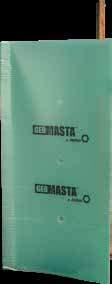
GEOmasta® 2L Cardboard Tree Guards are a biodegradable cost effective way of protecting new tube stock revegetation project planting. The 2L cardboard carton guards will provide shelter for young plants from wind and browsing animals during the early stages of growth. Being manufactured from cardboard similar to milk cartons, natural elements will break them down into the soil over time meaning you can leave them on site, not having to return to site to remove them.
y Totally biodegradable
y Easily installed with bamboo canes through the pre slotted guards (10mm-12mmx600mm recommended)
y Easy to store and transport
y Dimensions 95mmx95mmx300mm
These simple yet effective plastic sleeve tree guards are ideal for protecting young plants and tube stock, creating an environment conducive to growth. The non-porous plastic retains moisture around the leaves, resulting in a humid microclimate that encourages plants to thrive.
The UV stabilised sleeve helps to reduce water loss and increases the level of carbon dioxide around the plant, whilst also protecting it from wind and harsh weather.
Plastic sleeve tree guards are the most simple and cost effective solution for protecting young plants. When combined with complementary GEOmasta products such as jute mat and small hardwood stakes, they offer an extremely effective way to ensure the health and rapid growth of young plants.
y Helps create an ideal growth environment
y Retains moisture
y Protects plants from fluctuating temperatures
y Ideal for native plants
y Quick access roll dispenser makes for fast planting out
y Use with bamboo or hardwood stakes
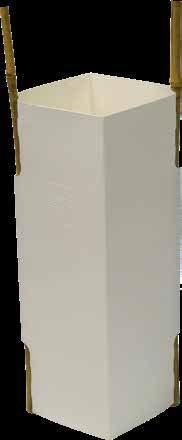


Typhoon® plant tablets contain slow release fertilisers & deliver nutrients & organic carbon to plants as per the plants' nutrient demand & feed all types of trees, shrubs & ground cover plants for up to one year. However, the release of Nitrogen is through microbial breakdown & we recommend to reapply after 7 –8 months to effectively match the nutrient supply as per the plants nutrient demand.
y Measured dose every time
y Labour saving
y Perfect for landscapers
y Feeds for up to 12 months
y Root zone placement means no feeding surface rooted weeds
y Incorporates essential trace elements to compensate for local soil deficiencies

} Suitable for Phosphorus sensitive plants including Australian Native Plants such as Banksia, Hakea, Dryandra, Grevillea, Acacia. Also suitable for South African plants such as Protea, Serruria, Leucospermum, Leucodendron. Suitable for Azaleas, Camellias, Blue Hydrangea
MACRO
Nitrate
Nitrogen (N) as Ammonium
MICRO ELEMENTS
Sulphur (S) as Sulphate
Magnesium (Mg) as Sulphate
Iron (Fe) as Sulphate
(Mn) as Sulphate
% w/w

Plant Assist™ is a specially blended soil additive to support newly planted tube stock and plants through the critical establishment period.
Plant Assist™ is a brilliant new product that incorporates soil & microbe friendly nutrients as well as organic water saving inputs that will provide an environment to give plants the best possible chance of establishing in all type of soil conditions. The high carbon base means that the product will have ample food for the biomass to establish around the root zone of the plants while also providing nutrient for the early stages of growth, with limited chance of burn. The silica rich, diatomaceous earth input, retains water while supplying silica for the plant: a known plant cell strengthener as well as a pathway for nutrient into the root.
Added zeolites further retain water and house all important microbes while not affecting the hydraulic conductivity of the soil in heavy conditions. Microbes, including mycorrhiza fungi & trichoderma help support and protect the root system and assist in supplying nutrient from beyond the root zone. Kelp, containing alginates and natural growth hormones, not only support cell division and reduce transplant shock but also holds many times its weight in water to further assist the new plantings. Water crystals and a natural surfactant, derived from saponins, completes this sophisticated product.
Plant Assist™ is a cost effective product that can be used on all plants, natives, tubes, turf, in pots, or in the ground.
y Helps create ideal root establishment environment
y Ideal for potting mixes or soil when planting
y Retains moisture
y May reduce transplant shock
y Will not burn roots
y Safe for Native plants
y Ideal for re-veg plant outs & tube stock
y Organic compounds assists root development
y Contains beneficial microbes & fungi
} Tubes: 12g (2 teaspoons) in hole.
} Pots: 80g (small handful) per 140mm pot or in hole
} Large Tubs: Up to 5% potting mix volume
} Soil Application: 200g / m2 turned into top 10cms soil.
} Under Turf: 200g / m2 raked into topsoil.
} Commercial: Apply 1 Tonne per Hectare
NOTE: Application rates are general advice only & trials on sensitive plants may be prudent. As no control can be exercised over storage, handling, mixing, application, weather, soil or plant conditions, the buyer assumes responsibility for the use of any Plant of Health products
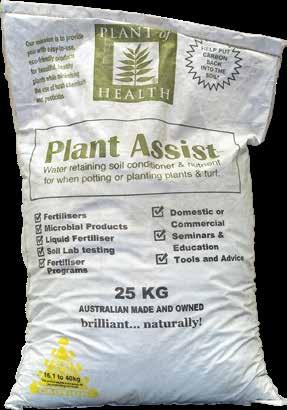

Water Wells are ideal for assisting Councils, Urban Landscapers & Land Division Developers to help efficiently water trees during establishment as well as directing nutrients to the root zone.
y Faster growth
y Water savings
y Concentrates mulch, fertilizer & reduces scattering by birds
y Eliminates water run off (ideal for sloping ground)
y Protects plant stems from whipper snippers & encroaching lawn
y Zip joins for easy installation
y Reusable & repositionable
} Plant Protection
} Revegetation
} Gardening
1. Join the sections together leaving the final joint open.
2. Prepare the planting hole to required plant depth and the bottom diameter width of the Water Well.
3. Position the plant in the hole and secure Water Well around the plant by joining the final zip.
4. The Water Well should be installed to the depth of half the height.
5. Back fill, mulch and fill with water.
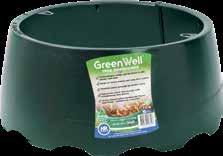


GEOmasta Root Barrier is designed to prevent the intrusion of tree root systems into sensitive areas. Tree Roots can aggressively spread and cause costly damage to buildings, pipes, foot paths and roadways, becoming both dangerous and expensive to repair. Made of virgin HDPE (High Density Polyethylene), GEOmasta Root Barrier offers superior performance and is more cost effective than traditional methods such as CFC Sheeting or Sheet Metal.
Care should be taken to install Root Barrier from surface level to 25% below the nominal root depth of the tree species being planted to ensure the roots do not grow under or around the barrier.
GEOmasta offers 450mm, 600mm, 900mm and 1200mm as standard sizing. Smooth sided Root Barrier is generally the preferred option for root deflection due to the limited hold offered for young roots.
} Shared Path protection
} Pipeline protection
} Building foundation protection
} Around individual trees in City Scapes APPLICATIONS


High performing dust suppressant, Road-X2™, is a non-corrosive and environmentally friendly product that is much cleaner than Magnesium Chloride alternatives.
Road-X2™ eliminates dust for 3-6 months at a time by coating and creating a barrier around individual soil particles.
It’s safe for humans, animals and vegetation, and it can be used on all soil types without forming a crust that breaks up.
The non-corrosive and biodegradable product is easy to use - simply mix with water and apply to the target surface with any spraying equipment. The water assists with carrying the concentrate and drawing it deeper into the surface structure. The amount of Road-X2™ concentrate used is based on the amount of fine aggregate in the surface.
y Biodegradable & Non-Corrosive
y Eliminates Dust
y Safe for Humans, Animals & Vegetation
y Easy to Apply
y Reduces the Need for Regular Watering
y Works with On-Site Soils
y No Leaching or Tracking

} Construction Sites
} Unpaved Roads
} Quarries
} Farm & Horticultural Laneways
} Industrial Yards
} Parking Lots
} Forestry Roads
} Walking Tracks
y Once applied Road-X2 will typically last for a minimum of 3-6 months
y Coarse sand material will require a higher application rate compared to material with a higher fine’s content
y Ensure the treatment area is dry and where possible graded to consist of an equal amount of dust and stone to allow the product to penetrate and bond. The area to be treated needs to be tight & well compacted
y Areas treated with Road-X2 can be opened to traffic immediately, although it should be initially slowed to minimise splashing & tracking
y Avoid pooling and run off during application to prevent entering water ways and drains
y Performance of any dust suppressant is subject to many variables, particularly traffic loadings, weather, ground conditions and application rates and methodology
y It is the applicator's responsibility to determine if any local council requirements are applicable

Natural Gypsum will improve soil structure, increase water penetration and increase aeration which will enhance root development. Natural Gypsum will improve the soil structure of heavy clay soils.
FEATURES & BENEFITS
y Clay breaker
y Grade 1 – Natural Gypsum
y 20kg bag
} Solves problems such as poor drainage, soggy soil and soil compaction.
} Provides essential plant nutrients - Calcium and Sulphur
} Improves the physical condition and drainage of hard clay soils
} Increases root development
} Improves the ability of air and water to penetrate the soil
} Improves soil structure
} Soil Conditioner
PRECAUTIONS FOR SAFE HANDLING:
y Avoid contact with eyes and skin
y Avoid breathing dust
y Wash thoroughly immediately after handling.
y Wash work clothes regularly
CONDITIONS FOR SAFE STORAGE:
y Store in a cool, dry well ventilated location, isolated from diazomethane, aluminium and phosphorus
y Keep containers sealed against exposure to air and water. Long term storage may result in caking.
y Store away from foodstuffs
} Low in moisture
} Lasts for years
} Organic, 100% Natural
} Calcium (CA) - 20.6%
} Sulphur (S) - 15.3%
} Grade 1 natural Gypsum
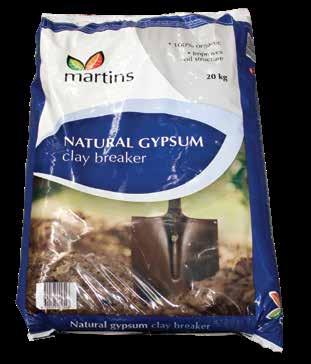

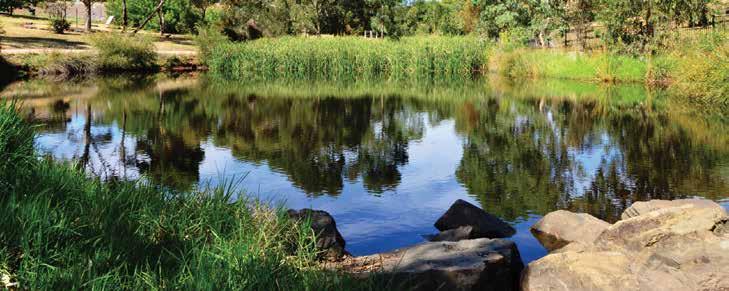
Flocculant Blocks are a simple, convenient method for applying flocculant to water requiring clarification.
TYPICAL APPLICATIONS
y Construction Sites - Clarification of storm water on building sites, housing developments and construction sites.
y Mines & Quarries - Clarification of storm water run-off from mining operations and stock piles of rock, sand and gravel quarries. Clarification of water from drilling operations.
y Road Construction - Clarification of storm water run-off at road, rail and tunnel construction sites.
y Trade Wastewater - Clarification of trade and industrial wastewater to remove solids and to thicken sludge.
y Flocculant Blocks are supplied as either rectangular bricks (210x170x80mm) or cylindrical blocks (170mmØ x 150mm). Each type weighs 3kg and will treat approx 300,000 litres of water.
y The most common methods for applying Flocculant Blocks are to place blocks at the entry point to the dam, at a point of turbulance that will ensure contact with most of the water flow. A point of turbulance may have to be created if one does not exist. Blocks should be secured in a wire mesh cage. Alternatively, water in a dam may be recirculated using a pump. The return water is pumped into a tank (~1,000L) in which the blocks are secured in a cage. Treated water continuously overflows from the tank back into the dam.
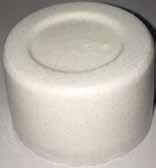


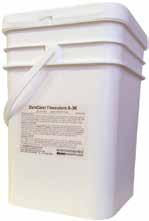
SPECIFICATIONS
PRODUCT
46-FAN1 Floc Bloc AN1 Anionic Flocculant (PAM) 3kg
46-FPG Floc Powder Grages A10, A30 Anionic Flocculant (PAM) Solid Grade 14kg drum
46-FCT1 Floc Bloc CT1 Cationic Flocculant (PAM) 3kg Block Carton of 6x3kg blocks
solids setting, no affect on pH
46-CAC Clarity Aid C Inorganic Coagulant Solid Grade 25kg bag Minimal affect on water pH, low aquatic toxicity
46-CACL Clarity Aid CL Inorganic Coagulant Liquid Liquid grade 5L, 20L, 200L, 1000L IBC Minimal affect on water pH, low aquatic toxicity
46-CAPAC Clarity Aid PAC Inorganic Coagulant Liquid Liquid grade 5L, 20L, 200L Reduces water pH. pH correction may be required
PRODUCT
46-FAN1 Floc Bloc AN1
46-FPG Floc Powder Grages A10, A30
46-FCT1 Floc Bloc CT1
46-CAC Clarity Aid C
46-CACL Clarity Aid CL
46-CAPAC Clarity Aid PAC
*Specifications as per manufacturer
Floc Bloc AN1 9kg Carton
46-FCT1 Floc Bloc CT1 9kg Carton
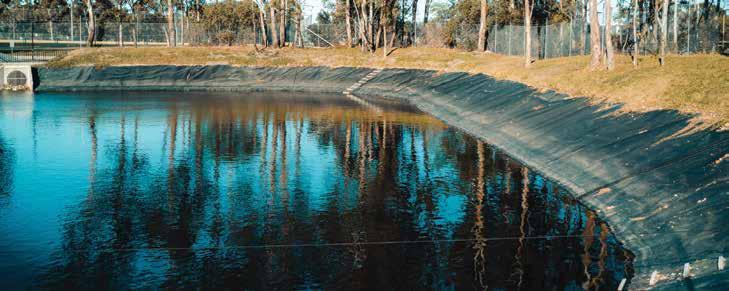
Due to its excellent chemical resistance and low material cost, HDPE is extremely popular in lining applications requiring low permeability and high strength/density ratio. HDPE Liners are becoming more widely used as the implications of contaminated soil conditions on structures and the general environment. GEOmasta® HDPE Liners are most commonly used in lining of channels, small dams and other containment structures.
HDPE is known for its large strength to density ratio. The density of HDPE can range from 930 to 970 kg/m3. Although the density of HDPE is only marginally higher than that of low-density polyethylene, HDPE has little branching, giving it stronger intermolecular forces and tensile strength than LDPE. The difference in strength exceeds the difference in density, giving HDPE a higher specific strength. It is also harder and more opaque and can withstand somewhat higher temperatures (120°C/ 248°F for short periods).
APPLICATIONS
} Channels
} Small Dams
} Containment Areas
} Landfill Liner & Caps
} Golf Course Ponds
} Pond & Lake Liners
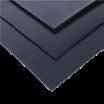
} Irrigation Reservoirs
} Waste Water Treatment
} Mining Tailing
} Canal Lining

The Tiltex system from GEOmasta is a composite 40mpa concrete geotextile that is supplied on a roll. This is laid out on site, hydrated and left to dry, providing a simple and effective lining for V drains, embankments, channels and spillways or as an alternative to shotcrete.
APPLICATIONS
} Embankment Lining
} Erosion Control
} Weed Suppression
} Replacing Shotcrete
} Bund Lining
} Slope Stabilization
} Alternative to Grout & Revetment Mattress
} Spillways
} Trenches/Swale Drains Lining
Tiltex is a needle punched composite, consisting of concrete-sand mix, embedded and fixed between two layers of geo-textile. It is much faster and cheaper to install than conventional materials, and our strict quality control of raw materials makes the finished product fail-proof. It provides a substrate for direct applications of a thin protective layer of regular concrete, which may be used in various weather conditions. The fabric is fastened to an outer part with nails, which provides a solid water-resistant surface stabilisation, further braced thanks to internal reinforcing fibers.
An additional advantage of the Tiltex System is that there is no need for special installation equipment. It is much faster and cheaper than conventional materials used in the lining of ditches, reservoirs, slopes banks and trenches.
SPECIFICATIONS
PROPERTIES OF GEOTEXTILE TEST METHOD VALUE
Carrier Layer - PP Nonwoven Composite EN ISO 9864 350 g/m2
Cover Layer - PP Nonwoven EN ISO 9864 200 g/m2
PROPERTIES OF CONCRETE TEST METHOD VALUE
Chemical Composition XRF Sand-cement mix
Density Typical 1,42 g/cm3
Setting Start PN-EN 196-3 > 90 min
PROPERTIES OF TILTEX (1) TEST METHOD VALUE
Tensile Strength MD/CMD EN ISO 10319 ≥ 20,0 / 20,0 kN/m (±10%)
CBR Puncture Strength EN ISO 12236 ≥ 3,0 kN (±10 %)
PROPERTIES OF TILTEX (2) TEST METHOD VALUE
Compressive Strength ASTM C 109-02 40 Mpa
Bending Tests Based PN EN 12467:2016-08 5.4.3 6,0 MPa – Class 1
Water Impermeability PN EN 12467:2016-08 5.4.5-6 No drop of water
Durability against Freeze-thaw PN EN 12467:2016-08 5.5.2 RL ≥ 0,75 Pass
Durability against Heat-rain PN EN 12467:2016-08 5.5.3 RL ≥ 0,75 Pass
Durability against warm water PN EN 12467:2016-08 5.5.4 RL ≥ 0,75 Pass
Durability against Soak-dry PN EN 12467:2016-08 5.5.5 RL ≥ 0,75 Pass
Reaction to fire PN EN 12467:2016-08 5.6 B-s1, d0*
(1) before hydration (2) after hydration *complies with EN 13501-1 *Specifications as per manufacturer
DRAINmasta™ StripFilter is a prefabricated composite product designed to effectively filter and transport groundwater.
All DRAINmasta™ HDPE drainage cores are bound with mastaTEX™ Nonwoven which is a high flow PE filament geotextile to prevent the ingress of foreign particles which would create long term blockage and flow issues.
DRAINmasta™ StripFilter is designed for subsoil drainage in road pavements, sports field drainage, behind shotcreting and bank stabilisation. DRAINmasta™ StripFilter requires minimal excavation and comes in a range of sizes to suit a variety of site applications.
All DRAINmasta™ products are inert to most alkalis and acids that are found in soil environments.

*Specifications as per manufacturer SPECIFICATIONS
PROPERTIES
CORE PROPERTIES

DRAINmasta™ SheetDrain is made from virgin material HDPE with a mastaTEX™ Nonwoven geotextile layer, forming a very high strength crush resistant drainage board. Designed specifically for use in retaining wall construction or rooftop gardens as a filtration and drainage layer to efficiently collect and channel seepage or ground water preventing the buildup of hydrostatic pressure.
DRAINmasta™ SheetDrain can be used in place of conventional drainage aggregate, saving time and money due to the light weight structure and easy installation. Some forward planning is required when used in larger retaining structures. Please contact Jaybro for simple 4 step installation procedure.
} Retaining Walls
} Bridge Revetments
SPECIFICATIONS
INDEX PROPERTIES
CORE PROPERTIES
PROPERTIES
*Specifications as per manufacturer
} Basement Walls
} Rooftop Garden


GEOmasta® Grass Pavers are a lightweight, high strength interlocking plastic grass paver designed for the creation of grassed areas subject to pedestrian and occasional vehicular traffic. Grass pavers are used in the construction of emergency access, overflow parking, home driveways, golf buggy paths and slope stabilisation.
GEOmasta® Grass Pavers have a porous structure allowing rainwater to infiltrate into the ground. The high loadbearing structure protects grass roots against compaction and effectively supports loads imposed by heavy vehicles.
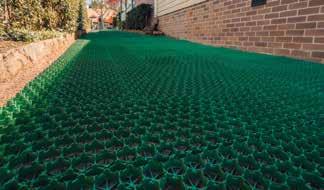
GEOmasta® Cell Drain creates a permanent non-clogging void between the concrete slab and the soil profile that will not collapse or distort. The 30mm void enables a direct flow of water to designated outlets avoiding the risk of water build-up and penetration.
} Overflow Carparks
} Emergency Access } Golf Buggy Paths } Slope Stabilisation
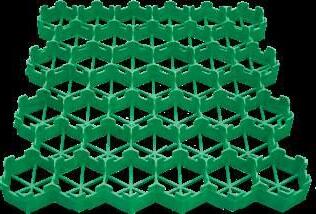

*Specifications as per manufacturer
The large surface and capacity void space enables superior drainage efficiency compared to the small voids created by using a gravel system. The lightweight nature of this product reduces weight on the structure by 98% over gravel making it the perfect choice for planter boxes, gardens and landscaped podiums.
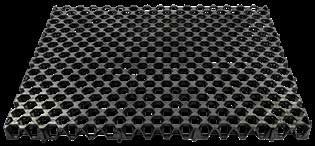



Flexible Drainage Pipe comes in unslotted and slotted both in socked and unsocked for every civil application. It is composed of HPDE Recycled and Virgin PVC which makes it strong, durable, easy to install and provides flexibility and a high flow capacity suitable for all drainage types including light medium and heavy duty.
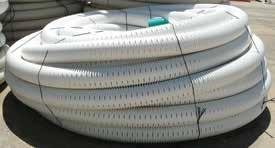

y Construction: Corrugated Single Wall
y Uses: Light to Medium Drainage (Agriculture - Civil)
y Composition: HDPE Recycled and Virgin
y Placement: Underground Trench
y Stiffness: SN8

} Gravity sewerage & drainage applications
} Stormwater drainage pipes
} Rehabilitation of old pipe
} Stormwater retention systems APPLICATIONS
y Construction: Corrugated Single Wall
y Uses: Heavy Duty Road Drainage
y Composition: Virgin PVC
y Placement: Underground Trench
y Resistance to Crushing: 1000N with 5%
y Stiffness: SN20
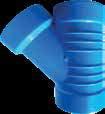
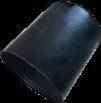

Premium SF5000 Silt Fence is a special, high quality, permeable, technical filter fabric that can be installed as an entrenched vertical barrier fence, and is designed to intercept and detain runoff, trapping harmful silt through settlement and filtration before it leaves the site. Material consists of Polypropylene Tape Yarn
Ideal for long term applications.
Premium Woven Silt Stop has a high flow rate and is very long lasting. Woven edges to resist fraying. U.V. resistant. Material consists Polypropylene Tape Yarn
Ideal for long term applications.
Woven Silt Stop. Green - U.V. resistant. Material consists Polypropylene Tape Yarn
Ideal for short term applications.

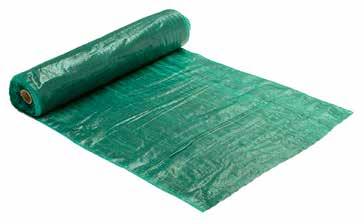

Make light work of filling sand bags, requires only one person. This saves the worker from bending and lifting and potentially causing sprains and strains.
In turn, using a sandbag filler can help your business reduce WHS claims. Can be used for both sand bags and SILTmasta™ Silt Bags.

y Heavy duty, trade quality aluminium die-cast body
y Power adjustment control system
y Ergonomic bi-material handle safety handle lock
y Takes flat wire staples between 6 - 14mm


Ideal for preventing sediment entering drains. Made from heavy duty polypropylene mesh to last up to 6 years outdoors, with tie strap and heavy weight UV resistance.
y Flow rate: 23Lt/m2/min
y Prefilled Silt Bag contains blue metal
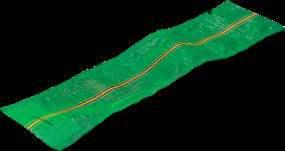

Economy Silt Bag with tie strap. Qty: 50 per pack.
Size: 230 x 860mm
Flow rate: 15Lt/m2/m
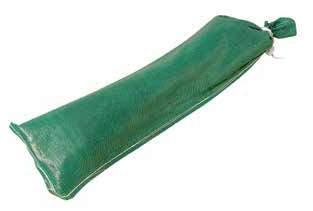
SILTmasta™Silt Socks are factory fabricated from high quality U.V. resistant filter fabric. SILTmasta™ Silt Socks are designed to go around drains and trap any sediment but allow water to flow through. SILTmasta™ Silt Socks can be filled with sand or gravel and placed around different site storm water inlets or across open drains. Material consists of PET.

The purpose is to minimise the silt or sediment loss from sites and the entry of these particles into storm water systems and essentially protect the natural waterways. Available in 50m rolls or 4m lengths.


Often used on site as a permeable barrier across minor drainage paths, swales and channels.
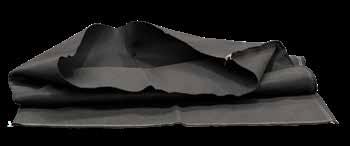
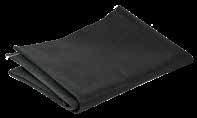
Extend the life of hay bales and dramatically increases the filter capabilities of a hay bale resistant material.
The ASSISE™ DeWatering Bags are perfect for pumping and filtering sediment laden water.
The DeWatering bags provide a simple yet effective method of removing heavy particles (>90 microns) from excavation water allowing silt free water to be released from the bag.

} 270gsm geotextile fabric
} Double thickness neck for strength
} 90 micron pore size
} Double stitching
} Male camlock connector
} Flowrate: 100L per second per m
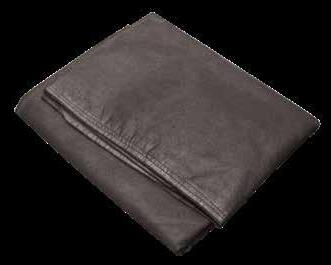
The Siltmasta™ SiltCurtain controls silt run off in streams by acting as a floating barrier. The curtain is made from geotextile material with polystyrene floats and a ballast pocket at the bottom for chain. Silt Curtains, also known as Sediment Curtains or Flotation Curtains, are designed and used to control sediment, algae or debris movement in waterways.
Silt Curtains consist of a high visibility reinforced plastic flotation pocket, and a non woven needle punched geotextile skirt to act as the filter and ballast pocket.
y Float: Closed Cell foam Flotation
y Material: 300gsm PET Non Woven Geotextile

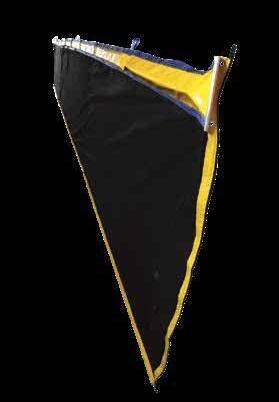
The unique design of the ASSISE™ SiltWarden uses a high tensile UV stabilised HDPE shade cloth to provide storm water inlet protection. The ASSISE™ SiltWarden fits inside an existing drain pit while the drain grate holds this inlet protection device in place. The superior horticultural shade cloth captures silt, course sediments and debris whilst allowing water to flow through the storm water drain. Designed for easy removal with forklift or other equipment, Silt Wardens are ideal for retaining silt on construction sites before roadways and infrastructure is laid.
y Skirt: 1.3m x 1.3m
y Basin: 600mm x 600mm
y Basin Depth: 600mm
y For use with pits sized 600x600mm to 1300x1300mm
y Material: 300gsm PET Geotextile

